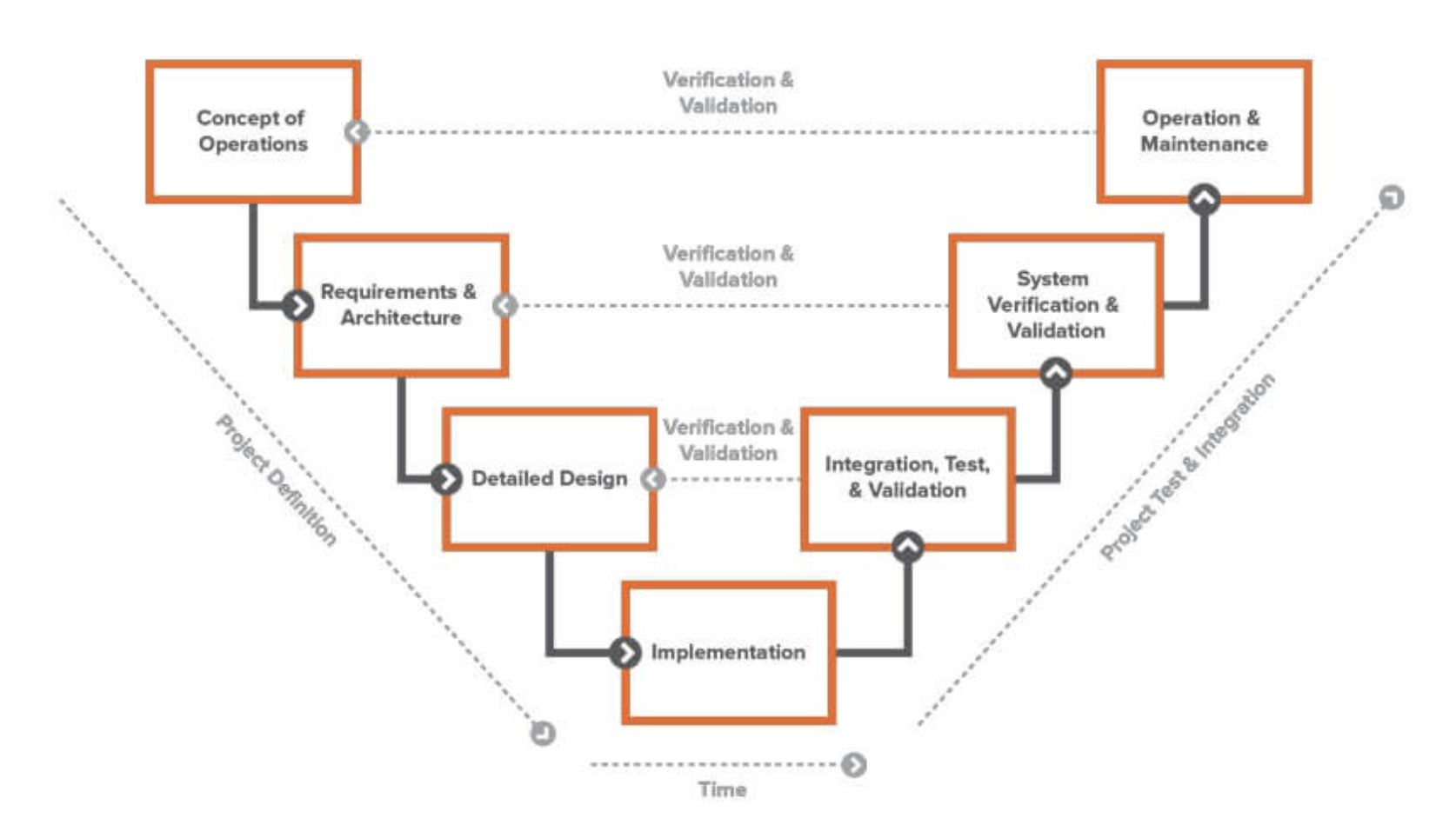What is Systems Engineering? – Jama Software
Developed in the 1980s, the “V” Diagram of Systems Engineering is a way of specifying the specific series of steps that make up a systems engineering approach. While it was originally employed in a pre-Agile environment, it still has relevance to product development today and can enable faster, less risky product development.
The “V” diagram allows system engineers multiple viewpoints and opportunities to evaluate systems as they integrate with each other. This approach starts with the desired outcomes and objectives and then deconstructs them into individual systems and system components for the purpose of design. Once the requirements and design details are established, individual systems can be tested and evaluated, then integrated into the overall piece for testing and verification. As the systems are integrated and become closer to the final complex system, teams have multiple opportunities to validate and verify concepts, requirements, and design.
For the systems engineer, the “V” Model can give a clear roadmap that allows the breakdown of the complex system into smaller parts and then the reintegration and reassembly of the pieces into a cohesive whole. With systems broken down to individual components, traceability, requirements management, and testing and validation become more manageable. In addition, as the pieces are reintegrated into the whole system, the “V” Model allows for an iterative process that gives a clearer view into potential risks and helps troubleshoot problems.

Systems engineering is a discipline that’s vital to the success of a complex system. By including systems engineers in all stages of product development and requirements management, teams can reduce risks, improve time to market, and produce better products that more adequately meet end user requirements.











